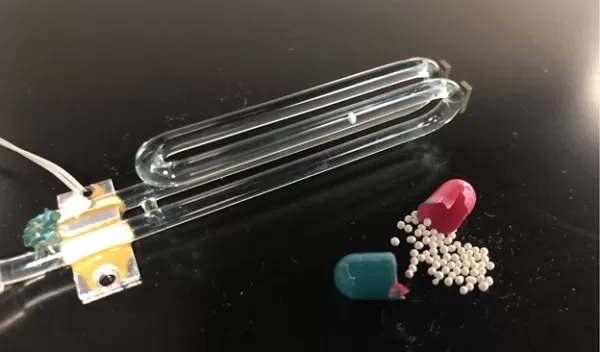
Simple new testing method aims to improve time-release drugs
When you take a time-release drug, you count on it doing what the package says: release the drug slowly into your bloodstream to provide benefits over the specified period of time. When the drug dissolves too slowly or too quickly, the results can range from inconvenient to tragic.
But assessing how a drug dissolves in the body is surprisingly tricky. Drug dissolution has to be measured under laboratory conditions that come as close as possible to what happens in the body.
In a U.S. National Science Foundation-funded paper published in Scientific Reports, University of California, Riverside researchers describe a simple, inexpensive way to measure drug dissolution that should help pharmaceutical companies develop better and more consistent time-release drug products.
"We directly measured dissolution profiles of single drug granules, which are the little spheres you see when you open a capsule," said corresponding author William Grover, a UC Riverside bioengineer. "We accomplished this using a vibrating tube sensor, which is just a piece of glass tubing bent in the shape of a tuning fork."
Pharmaceutical companies usually test drugs by placing them in a vessel filled with fluid that mimics the contents of the gastrointestinal, or GI, tract, and stir the fluid to recreate GI tract dynamics.
Grover and colleagues took a different approach. Rather than measure the increasing concentration of the drug in the fluid, they decided to measure the decreasing mass of a solid pellet as it dissolves.
The group used a glass tube bent like a tuning fork and kept vibrating by a circuit at its resonance frequency, which was determined by the mass of the tube and its contents. When the researchers filled the tube with simulated stomach and intestinal contents and passed an over-the-counter time-release drug granule through the tube, they observed a brief change in the frequency.
When plotted, they could compare the peaks of resonance frequency against the time to learn the buoyant mass of the drug granule at that moment.
